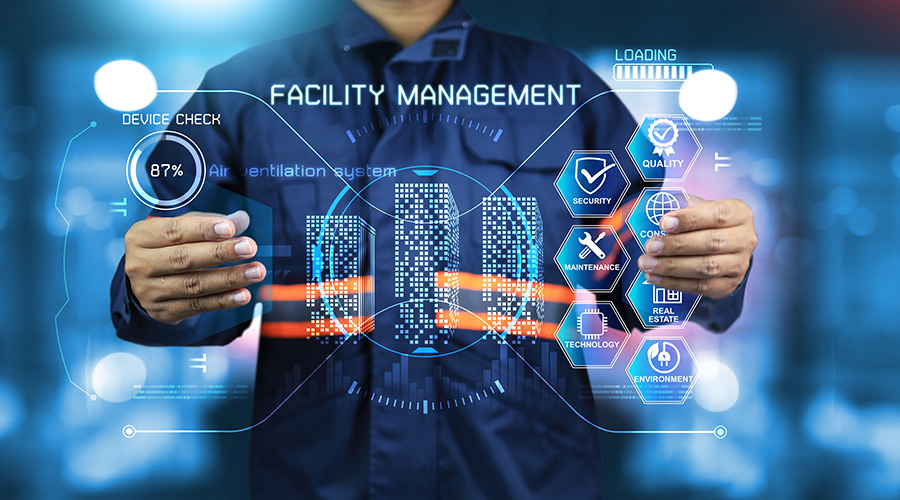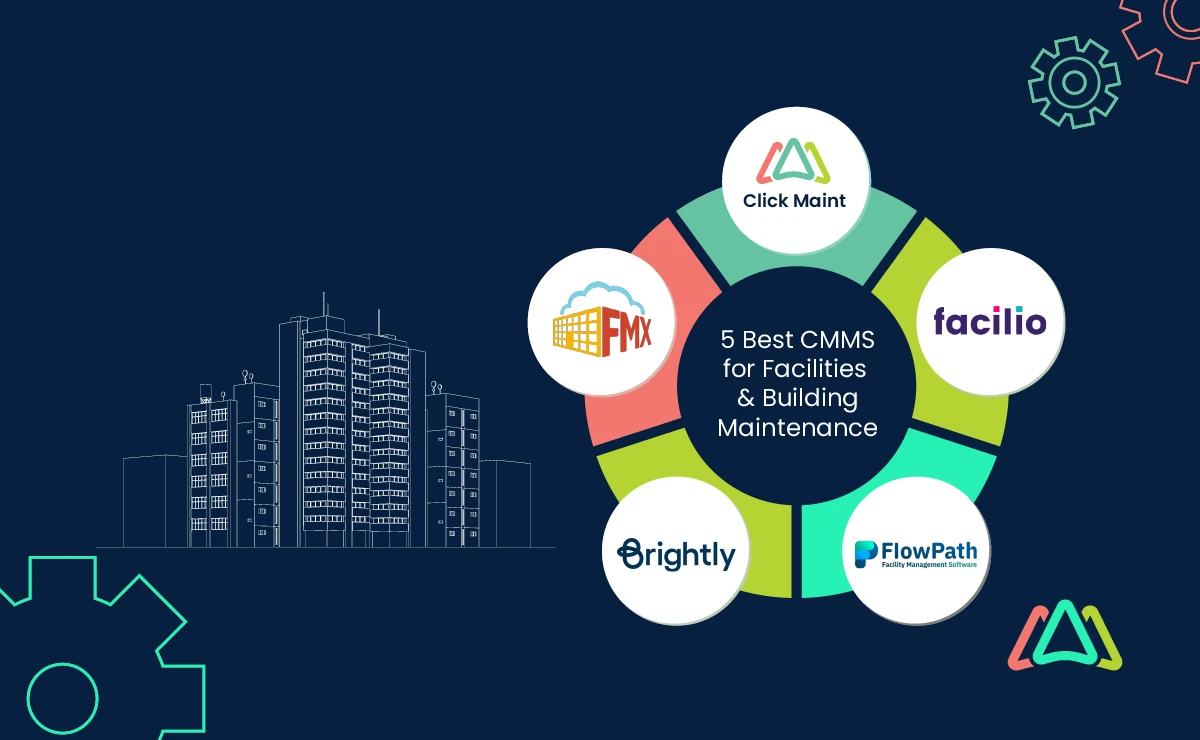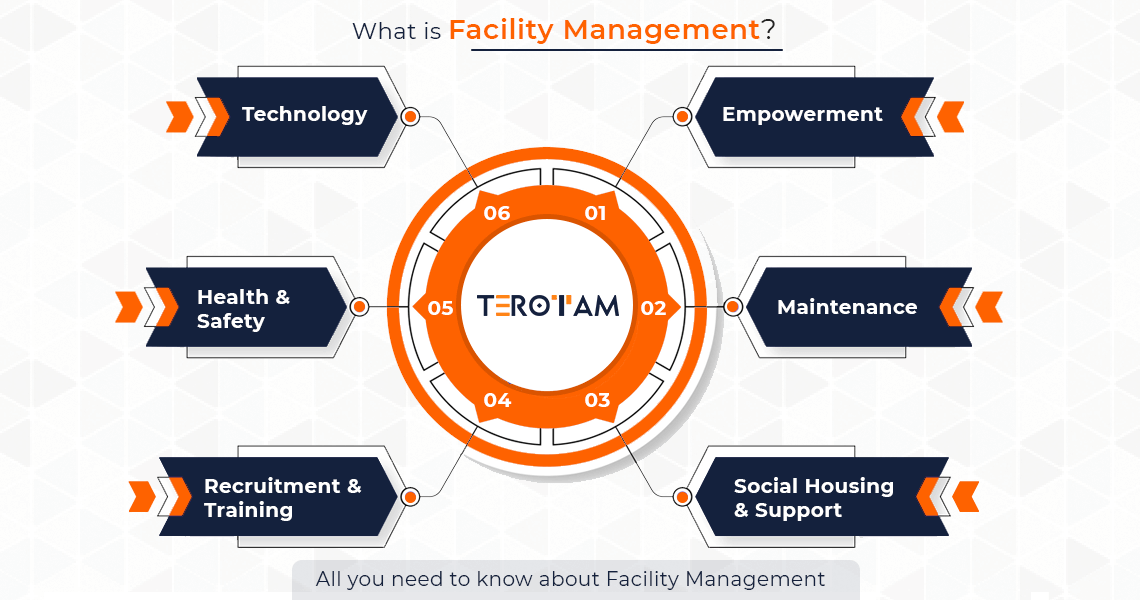Facility Management Provider-- Ensuring Security and Maintenance
Facility Management Provider-- Ensuring Security and Maintenance
Blog Article
Key Fads Shaping the Future of Center Monitoring in 2024
As we look ahead to 2024, the landscape of facility monitoring is positioned for significant change, driven by numerous vital trends. The integration of smart building modern technologies and a change in the direction of data-driven decision-making guarantee to boost operational effectiveness while focusing on sustainability in technique. The development of crossbreed job designs is reshaping office atmospheres, necessitating innovative design solutions that cater to evolving worker demands. In the middle of these modifications, the concentrate on passenger wellness proceeds to obtain grip, highlighting the value of a healthy workplace. Just how these fads will materialize in practice continues to be a critical concern for market professionals.
Smart Structure Technologies

Smart building technologies encompass a broad variety of systems, consisting of smart lighting, cooling and heating controls, and safety and security systems. By integrating these systems, facility supervisors can keep an eye on and adjust specifications in real-time, bring about considerable decreases in power waste and functional prices. Wise sensors can discover occupancy levels and adjust lights and temperature level accordingly, guaranteeing that power is only used when necessary.
Moreover, these modern technologies promote boosted information collection, enabling organizations to track use patterns and determine chances for further improvements. The execution of wise building technologies not just adds to sustainability objectives yet additionally creates much healthier work environments that can boost staff member performance and contentment.
As we relocate into 2024, the fostering of wise structure innovations will likely speed up, mirroring a wider shift in the direction of more smart, responsive, and lasting facility monitoring methods.
Data-Driven Decision Making
Progressively, companies are leveraging data-driven choice making to enhance center management methods. By utilizing information analytics, facility supervisors can derive workable insights that substantially boost functional efficiency and resource appropriation. The combination of innovative technologies, such as IoT sensing units and real-time monitoring systems, allows the collection of vast amounts of information on structure performance, tenancy prices, and energy usage.
This wide range of info permits facility managers to identify patterns, anticipate upkeep requirements, and proactively address concerns prior to they intensify. For example, predictive analytics can forecast tools failures, decreasing downtime and fixing prices. Additionally, data visualization tools assist in far better communication among stakeholders, ensuring that notified choices are made collaboratively.
In addition, data-driven approaches enhance tactical planning by allowing facility managers to examine the performance of existing methods and make educated selections pertaining to investments in technology or infrastructure. As companies increasingly prioritize operational excellence, data-driven decision production is positioned to end up being a keystone of effective facility management techniques in 2024 and beyond. Eventually, the ability to take advantage of data efficiently will Recommended Site equip organizations to create more reliable, efficient, and durable facilities.
Sustainability and Green Practices
The emphasis on data-driven choice making normally aligns with the growing concentrate on sustainability and environment-friendly methods within facility management. As organizations progressively prioritize ecological obligation, facility supervisors are leveraging analytics to maximize resource use, minimize waste, and reduce carbon footprints. This critical technique enables the assimilation of energy-efficient systems, such as LED illumination, smart HVAC controls, and eco-friendly power sources into center operations.
In addition, the application of sustainable practices extends past energy intake. Facility supervisors are adopting environmentally friendly products and promoting reusing efforts to create a round economic situation within their facilities. This not just boosts the ecological account of the organization yet also cultivates a society of sustainability among workers.
Conformity with ecological policies is another important facet driving the fostering of eco-friendly methods. By utilizing information analytics, facility managers can check conformity metrics and determine locations for improvement, making certain adherence to neighborhood and international sustainability standards.
Hybrid Job Models
A considerable shift towards hybrid job models is reshaping the landscape of facility monitoring in 2024. This paradigm incorporates in-office and remote job, demanding a reevaluation of room application, source appropriation, and employee engagement approaches. Organizations are progressively acknowledging the value of flexible work spaces that accommodate diverse demands and preferences.
Center supervisors must adapt by executing functional workplace designs that sustain collaborative initiatives while offering areas for concentrated job. This includes the integration of modern technology to help with smooth communication and partnership among remote and in-office workers. Smart building options, equipped with analytics and sensing units, permit for real-time tracking of area usage, making it possible for organizations to enhance their atmospheres efficiently.
In addition, crossbreed job models stress the demand for reliable center management that focuses on staff member experience. This encompasses not only technology and area layout however likewise the development of plans that advertise a well balanced work-life dynamic. As business browse this change, the function of center administration becomes critical in developing an active work environment that cultivates productivity and drives organizational success. Basically, the hybrid job design is transforming center monitoring, motivating an aggressive method to satisfy the developing needs of the workforce.
Improved Owner Health
As organizations embrace hybrid job versions, an increased concentrate on occupant health is ending up being indispensable to center management approaches. Facility Management. This shift identifies that a pleased and healthy and balanced labor force straight impacts efficiency and retention rates. Facility managers are now prioritizing settings that promote psychological and physical wellness, incorporating components such as all-natural illumination, biophilic design, and obtainable wellness sources

Technology plays a critical duty in this evolution. Smart building systems can keep track of ecological elements and adjust settings in real-time, guaranteeing ideal convenience degrees - Facility Management. In addition, feedback systems, such as occupancy sensing units and worker surveys, allow facility managers to consistently fine-tune wellness campaigns based upon owner needs.

Conclusion
In 2024, the future of facility monitoring will certainly be dramatically affected by the assimilation of smart building innovations and data-driven decision-making, fostering improved operational effectiveness. Sustainability efforts will prioritize environment-friendly practices, while the introduction of hybrid work versions will require versatile office layouts. An increased focus on resident health via advanced Cooling and heating systems and biophilic layout will add to much healthier work atmospheres. These fads jointly highlight the evolving landscape navigate to these guys of center administration in reaction to modern challenges and chances.
Center managers are advertising and adopting green products reusing initiatives to develop a round economic situation within their centers.A significant change in the direction of hybrid work designs is reshaping the landscape of center administration in 2024.Additionally, hybrid job designs emphasize the need for reliable center monitoring that focuses on staff member experience.As companies welcome hybrid job designs, an enhanced focus on occupant wellness is coming to be indispensable to center monitoring methods.In 2024, the future of facility administration will be substantially influenced by the integration of wise building technologies and data-driven decision-making, fostering improved operational performance.
Report this page